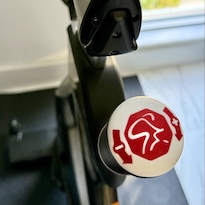Welcome to the Indoor Cycling Association
How to Coach Resistance in Your Indoor Cycling Class, Part 3: Start Strong—Teaching the First Touch of Resistance
In parts 1 and 2, I discussed two approaches to avoid when cueing resistance. In this and the following article, I provide tips on how to teach the concept of resistance and inspire your riders to add enough so that they achieve the adaptations your profile is targeting. This article describes the warm-up and provides cues for establishing that first touch of the resistance knob or gear level so riders can prepare the body at the proper intensity.Read more…
Mainstream Music Monday: A Song for Riders Who Love Drama
Looking for a song that builds tension, drops emotion, and times your standing intervals perfectly? This one’s got it all…and then some!Read more…
Friday Favorites: A Percussive Powerhouse for Your Next Climb
This week’s Friday Favorites features a track driven by powerful percussion that will elevate your ride. With its steady rhythm and evolving intensity, it’s perfect for a challenging sustained climb or rolling hills. Whether you’re keeping a consistent 70 rpm or varying your cadence with the terrain, the beat will help you push through the effort and stay focused.Read more…
 Theme Ride Thursday: End of the World Day (May 21)
Theme Ride Thursday: End of the World Day (May 21) 

Grab your helmets and your sense of humor—because it’s the end of the world…again. Or not. May 21 is End of the World Day! Whether you’re escaping an asteroid or doing your final sprint through the gates of Valhalla, this is a theme ride idea that lets you mix humor, storytelling, and music with just enough existential dread to keep things spicy. Use our bucket playlist of 235 songs and these creative coaching ideas to help you create your last class on Earth. Make it legendary and ride like there’s no tomorrow…again! 
Wednesday Timeless Classics: A Song That Builds Emotion and Power
This song is an iconic piece from the mid-’80s, known for its slow, steady build in both energy and emotion. Starting off soft and ambient, it gradually intensifies, making it perfect for a progressive 3-2-1 drill at 100 rpm. As the track reaches its peak, you’ll feel the power surge, giving your riders the perfect opportunity to push their limits and finish strong.Read more…
Mainstream Music Monday: You Had Me at Hello
With its high cadence and built-in recovery, this 9-minute track brings a little piece of heaven right into your 3-2-1 interval ride.Read more…
Friday Favorites: Pure Gold on the Bike
Looking for a song that delivers both feel-good energy and versatility? This track is a total win for your ride—perfect for a warm-up, flat, or cool-down with its uplifting groove and empowering vibe. It’s the kind of song that pays off, on and off the bike.Read more…
Mainstream Music Monday: An Ethereal Cool-Down
This is space for riders to savor being done, feel accomplishment, and get lost in the beautiful ether.Read more…
How to Coach Resistance (Part 2): Why a 1–10 Resistance Scale Doesn’t Work for Coaching Resistance
In part 1 of this series on coaching resistance in cycling classes, I described a popular but ineffective coaching method: assigning a specific number of “turns” on the resistance knob. Now I want to address another flawed method: using a 1–10 resistance scale. Honestly, this one might be even worse—because it’s not tied to anything meaningful. It’s arbitrary, inconsistent, and ultimately unhelpful. Here are four reasons why this method leads to confusion.Read more…
Friday Favorites: The First Track from a First Album Makes a Great Second Song
The second song in a playlist provides a key transition from the warm-up to the meat of the profile. This song, from the debut album of a rising singer-songwriter, serves as an excellent example.Read more…







